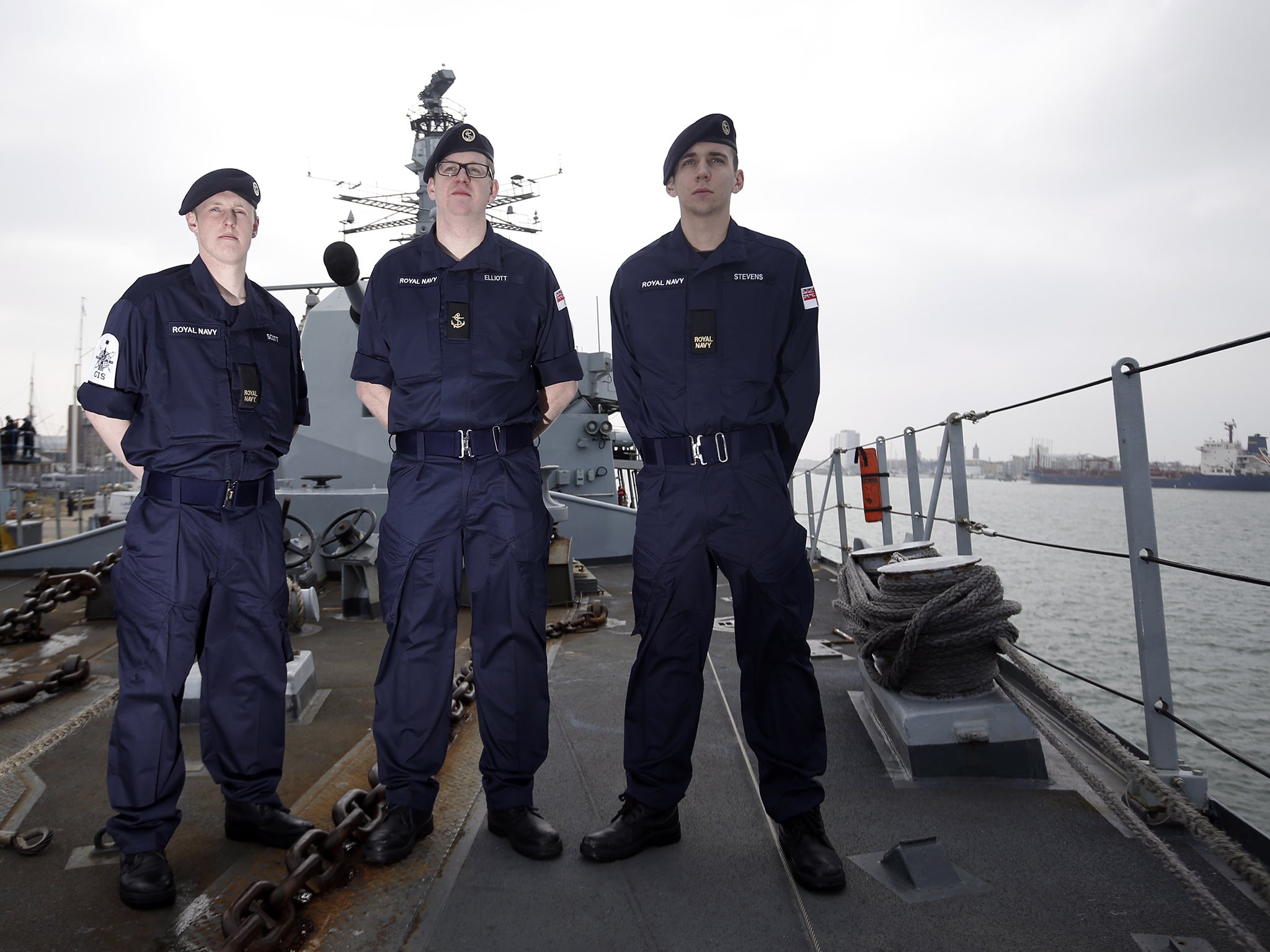New Navy uniform compared to a 'fire-retardant bin liner'
The new uniform is the navy's first in 70 years

Your support helps us to tell the story
From reproductive rights to climate change to Big Tech, The Independent is on the ground when the story is developing. Whether it's investigating the financials of Elon Musk's pro-Trump PAC or producing our latest documentary, 'The A Word', which shines a light on the American women fighting for reproductive rights, we know how important it is to parse out the facts from the messaging.
At such a critical moment in US history, we need reporters on the ground. Your donation allows us to keep sending journalists to speak to both sides of the story.
The Independent is trusted by Americans across the entire political spectrum. And unlike many other quality news outlets, we choose not to lock Americans out of our reporting and analysis with paywalls. We believe quality journalism should be available to everyone, paid for by those who can afford it.
Your support makes all the difference.The Royal Navy’s first new uniform for 70 years has been compared to a “fire-retardant bin liner” and frequently compared to overalls worn by garage machanics.
The new darker blue uniform will replace the light blue shirt and trousers known as Action Working Dress, or No4, that had been in action since World War II.
The Ministry of Defence had described the new design as “cool and more modern”, however wider reaction to Thursday’s unveiling was somewhat less enthusiastic.
One Twitter user compared it to a “sack of spuds tied in the middle,” another said that it had the look of a “fire retardant bin liner” and frequent references were made to similarities with jumpsuits worn by mechanics.
However, on the site, a member of the Royal Navy said: “Can’t wait to get the new Royal Navy Uniform! Looks a lot better than the one we have now!”
The navy have said that the majority of feedback from sailors has been positive.
The new design has several layers, including a t-shirt, top and thermals, and will offer more protection from fires. Badges denoting rank will also be worn on the front, instead of on the shoulders.
Officially called the Royal Navy Personal Clothing System (RNPCS), the new design has already been tested on several ships and submarines.
It will only be worn during operational duties and will not replace more formal uniforms or the berets when sailors return home from deployment.
It is fitted with Velcro fasteners that allow crew members to dress quickly if called into action and new boots with “fake” laces at the front which are “non-operational.”
It has undergone a three year trial period, perhaps appropriately on the HMS Daring, and the next crew to wear the new No4s will be those on board the Portsmouth-based HMS Lancaster, which will head out to the South Atlantic on Saturday on a nine-month deployment.
Cdr Peter Laughton, commanding officer of HMS Lancaster, said: “We are extremely proud and genuinely delighted to be the first ship to wear the Royal Navy’s new uniform.
“It is a really practical, smart and modern uniform, and the extra branding allows us to much better represent our service.”
Around 22,000 sets of uniforms are being issued to sea-going ships in the current roll-out.
Vice Admiral David Steel, who led the changes in his previous post of Second Sea Lord, described the old look as “a bit out of date.”
He added: “This is a modern uniform which suits a modern Navy.
“But the most important thing is that it is comfortable to wear in the extremes of climate in which the Royal Navy operates – from the Antarctic to the Gulf.”
Join our commenting forum
Join thought-provoking conversations, follow other Independent readers and see their replies
Comments